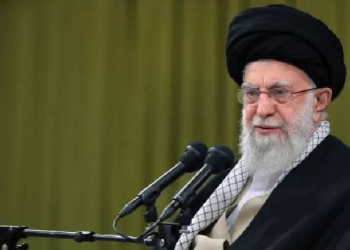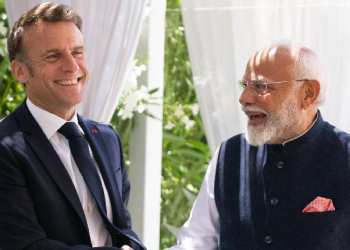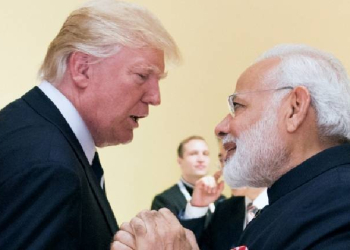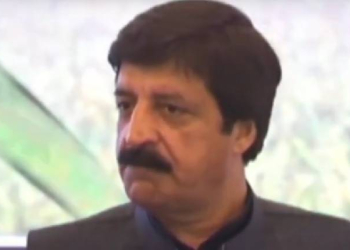Montreal: At the ongoing UN biodiversity summit, referred to as COP15, that will reach a consensus on putting in place the post-2020 Global Biodiversity Framework (GBF), India has said the support for agricultural production in developing countries cannot be shifted.
In a statement at the summit by Indian delegation led by Environment, Forest and Climate Change Minister Bhupender Yadav on Saturday noted that its goals and targets must be based on the principle of common but differentiated responsibilities.
The EU urged strong and measurable 2030 targets, including a 50 per cent reduction of chemical pesticides, the conservation of 30 per cent of land and sea areas (30×30), and a 30 per cent reduction of humanity’s ecological footprint, with new and additional resources from all sources.
Antigua and Barbuda for Small Island Developing States (SIDS) with Saint Lucia for the Organisation of Eastern Caribbean States pleaded that the COP remains faithful to the wording and spirit of the Convention on Biological Diversity (CBD) and to take SIDS’ vulnerabilities into account.
Chile, also on behalf of Colombia, Costa Rica, Peru, and Mexico, highlighted the role of their countries as guardians of biodiversity, and called for ambition on all fronts and regarding all three objectives of the CBD.
The 15th Conference of the Parties (COP15) to the United Nations Convention on Biological Diversity (CBD) is an international meeting that brought together nearly 200 signatory countries with the aim of setting a global roadmap for the conservation and sustainable management of biodiversity and natural ecosystems for the next decade.
Participants will set out new goals and develop an action plan for nature over the next decade. The government of Canada’s priority is to ensure the COP15 is a success for nature.
What is the way forward?
COP President Huang Runqiu announced that a President’s text will be available at 8 a.m. (EST time) on Sunday, for consultation with heads of delegation, in an attempt to forge consensus on: the GBF and its monitoring framework; resource mobilisation; planning, monitoring, reporting, and review; and capacity-building, and technical and scientific cooperation.
Calling for a “net zero, nature positive world”, Australia, in a statement, announced plans to increase international public finance for nature up to 2030, building on their commitment to double development assistance funding to (Australian) $2 billion.
Switzerland called for an ambitious, effective, and fair COP 15 outcome, cautioning against unrealistic finance-related demands. Congo urged adoption of a bold framework, including a new biodiversity fund, and strong resource mobilisation, scientific cooperation, and technology transfer components.
COP15 host Canada called on parties to choose collaboration, compromise, and consensus over disagreement, delay, and risk for nature.
Drawing attention to the health of the ocean, New Zealand expressed readiness to target support where it is most needed to ensure a nature positive future. The UK urged an ambitious GBF, including nature restoration, a 30×30 target, and commensurate finance.
Noting steady progress in the negotiations, Brazil said the core elements of digital sequence information on genetic resources and resource mobilization are key to completing and adopting the GBF, and urged alignment with the 2030 Agenda for Sustainable Development.
A youth delegate from Norway remarked that “the current discussions will set the tone for our relationship with nature for the rest of my life”.
Indonesia opposed any numerical target regarding harmful subsidies, while Japan underscored the importance of resource mobilisation from all sources for effective GBF implementation, involving all stakeholders, and being innovative regarding a successful mechanism for digital sequence information.
At the high-level segment closing plenary, the COP President reiterated the call to finalise and adopt an ambitious, robust, and implementable GBF.
Valerie Plante, Mayor of Montreal, said cities are essential partners for biodiversity protection. Liu Jiachen, Mayor of Kunming, reported on the Kunming center of excellence aims to work with cities globally to strengthen local governments’ commitment to GBF implementation.
In an intergenerational dialogue, elder Lucy Mulenkei, of the International Indigenous Forum on Biodiversity (IIFB), and Hector Alan Valdes Suarez, of the Global Youth Biodiversity Network, pleaded for an inclusive and restorative GBF, which fosters collaboration between living generations and looks after future generations.
Responding to stand of the nations, NGO Avaaz, a global campaign community of over 70 million citizens, told IANS that all groups were more or less in agreement with a number of $200 billion annually by 2030, and that this would include funding from all sources, international, domestic, public and private.
Regarding the international flows to developing countries, it said they got a good indication that an increase is needed and should be materialised.
But, it says, there is still a wide range of views on the question of the architecture on biodiversity finance.
Some parties would favor the establishment of a stand-alone fund outside the existing funding structure. Others would like to improve the existing funding mechanisms and are not in favor to establish anything new.
In several meetings, groups discussed that there might be a compromise middle ground in establishing a dedicated fund on global biodiversity that is linked to and administered by the Global Environment Facility, the world’s largest funder of biodiversity protection, nature restoration, pollution reduction, and climate change response in developing countries.
(IANS)





















